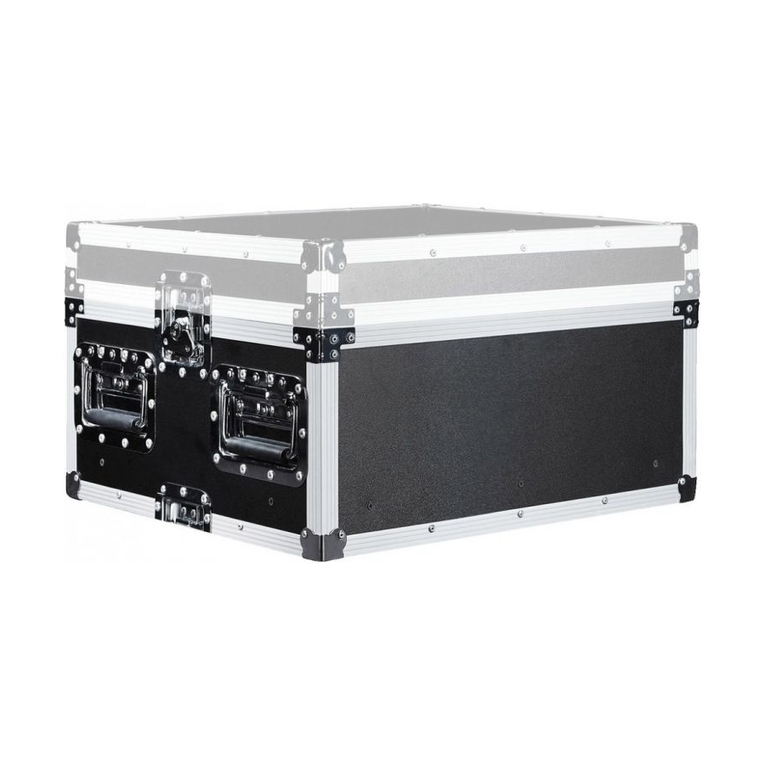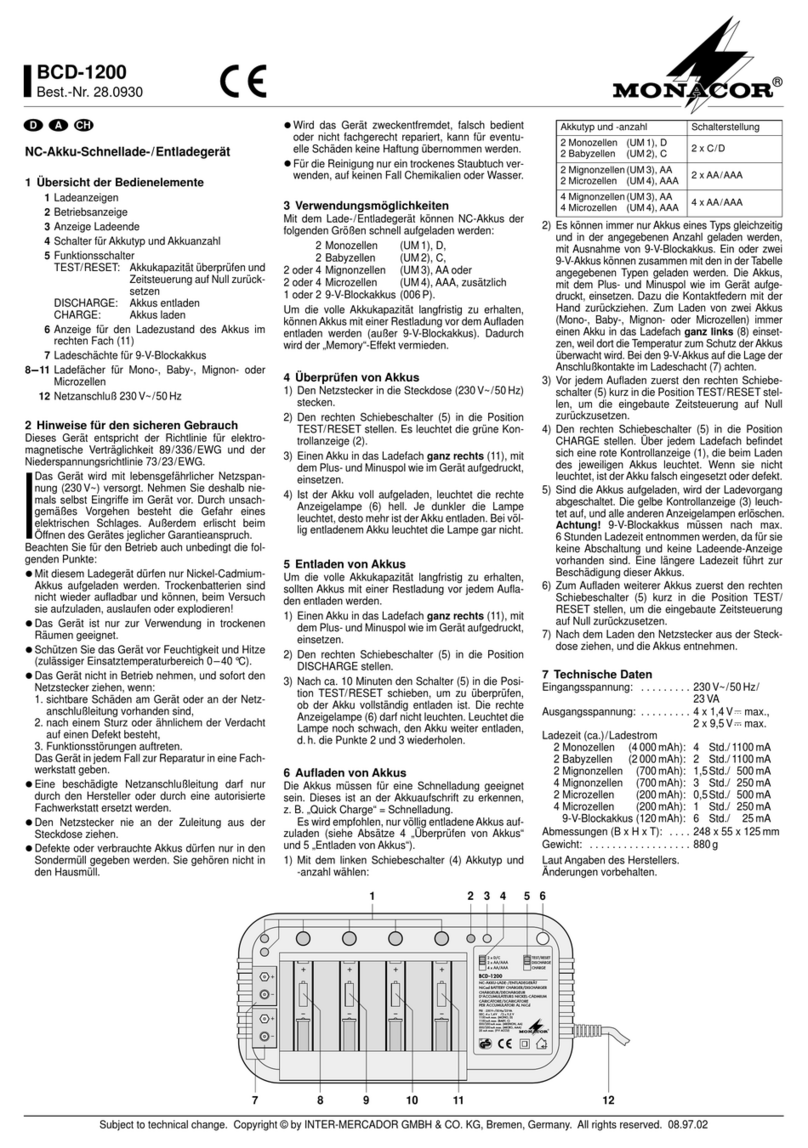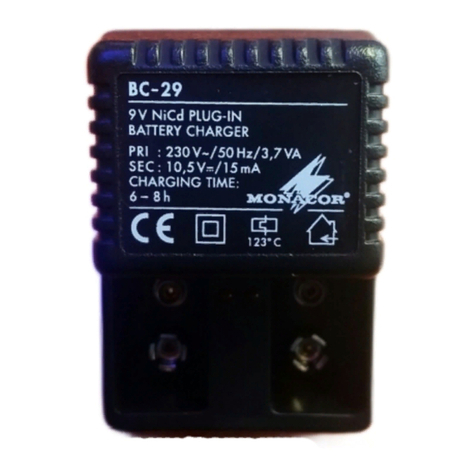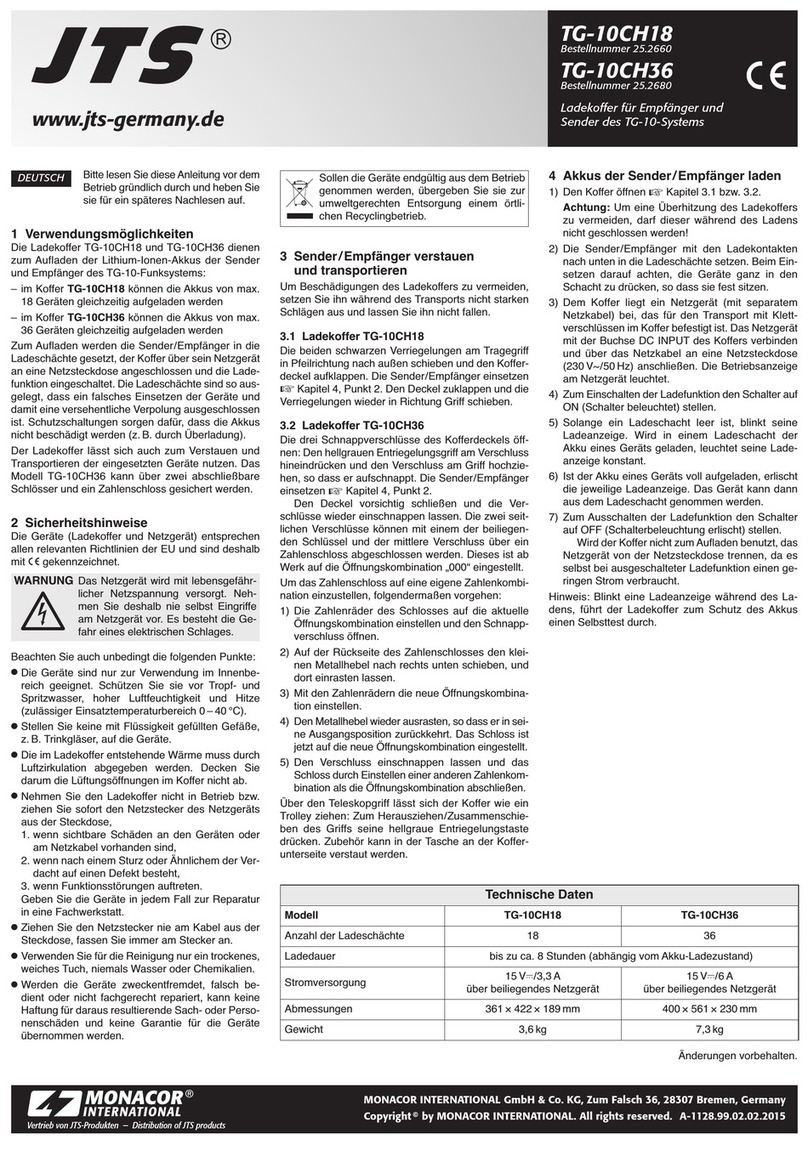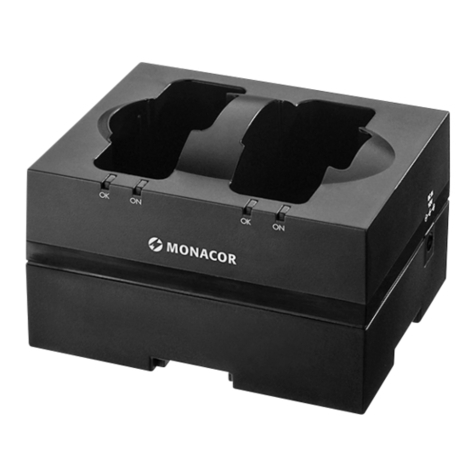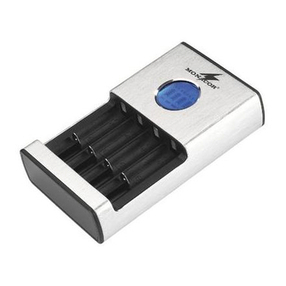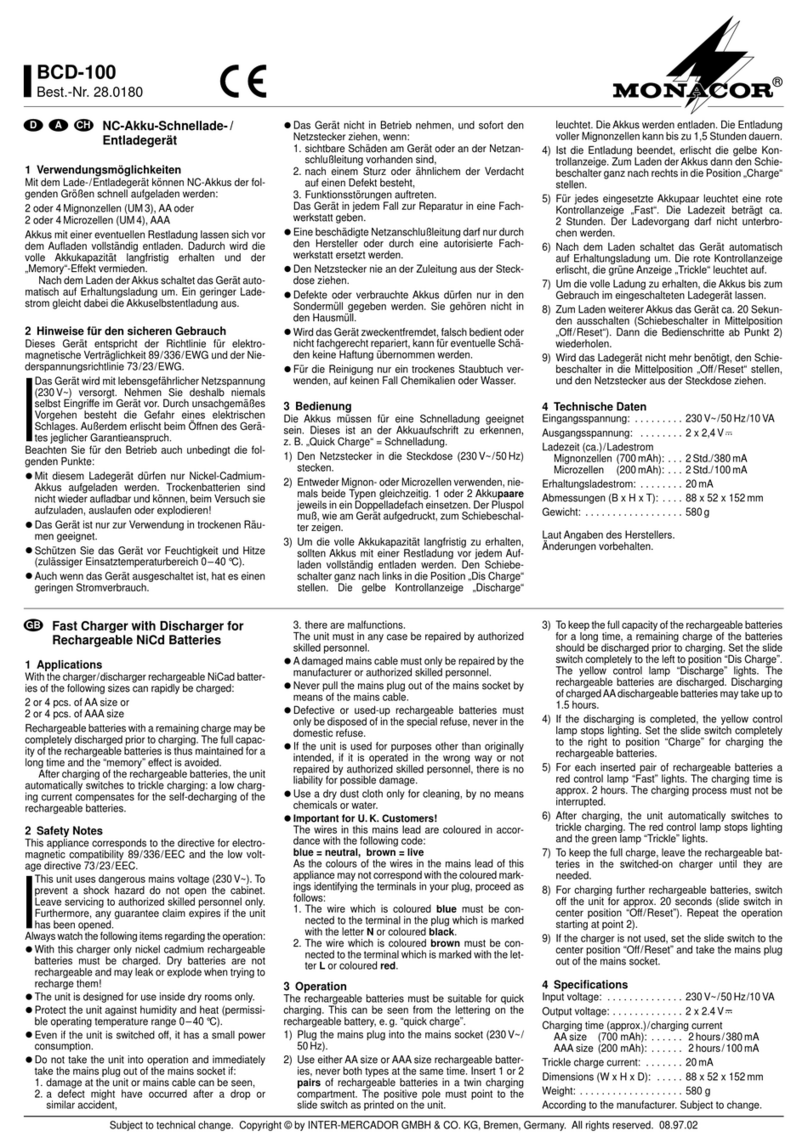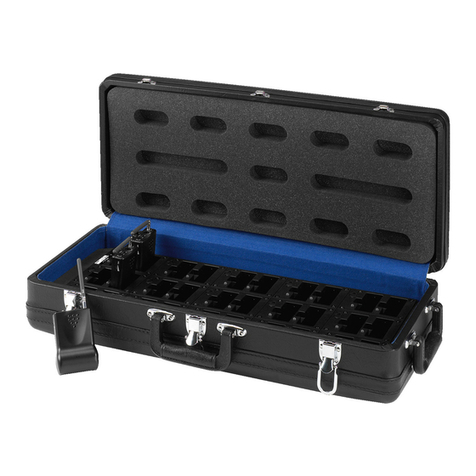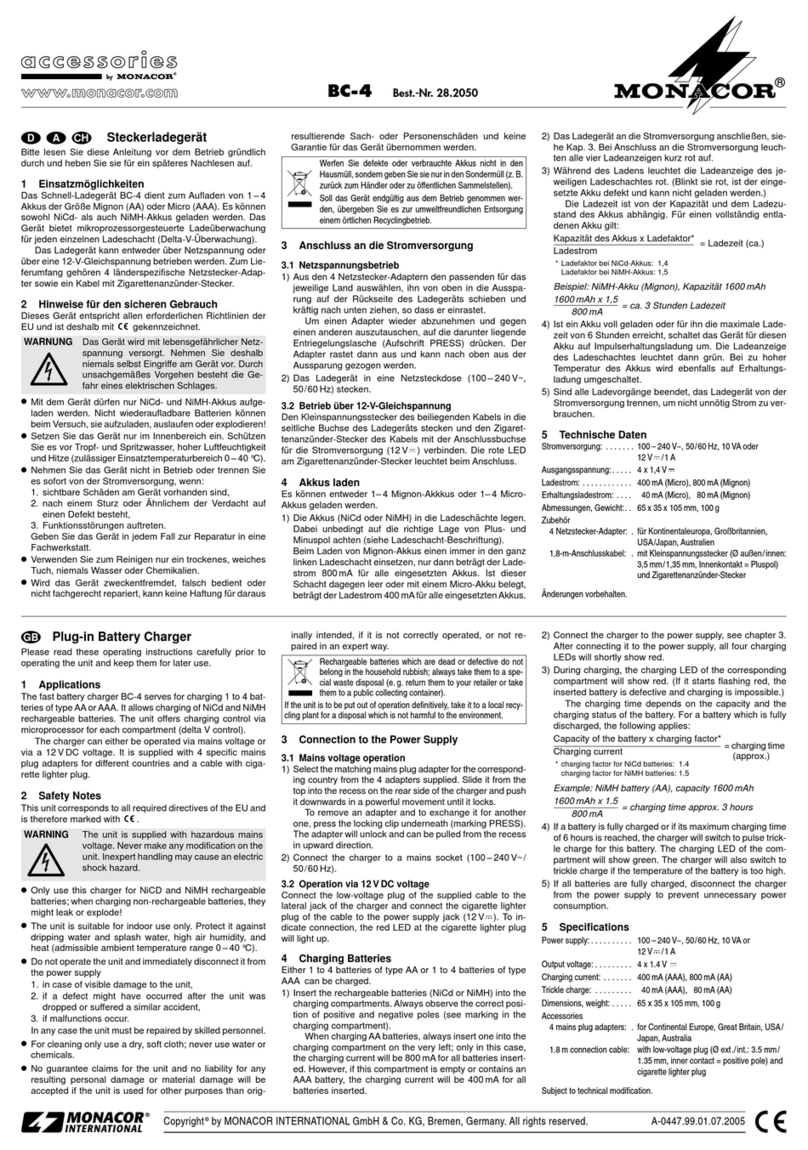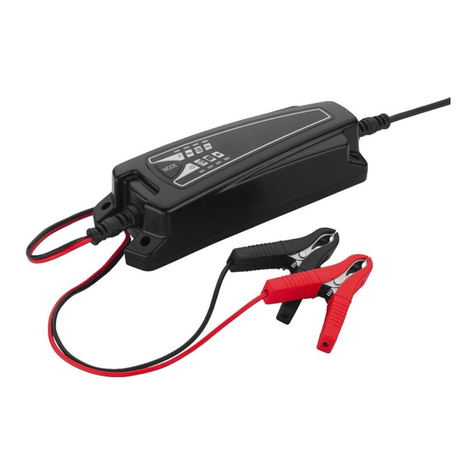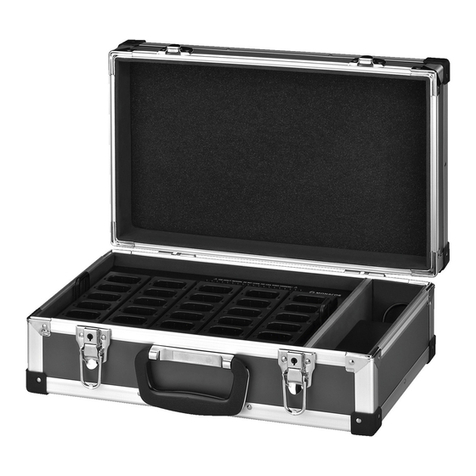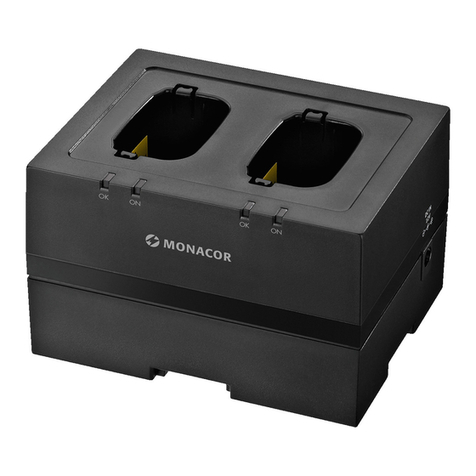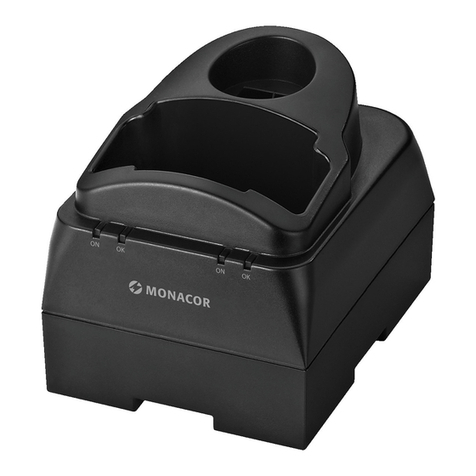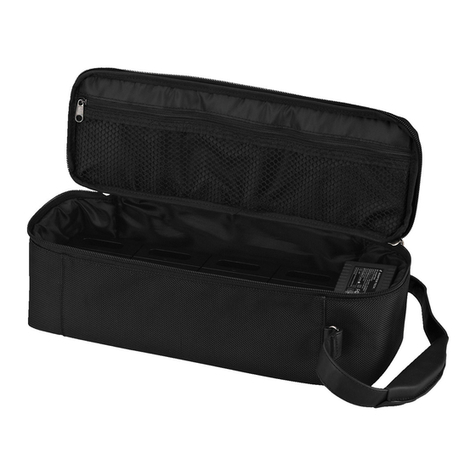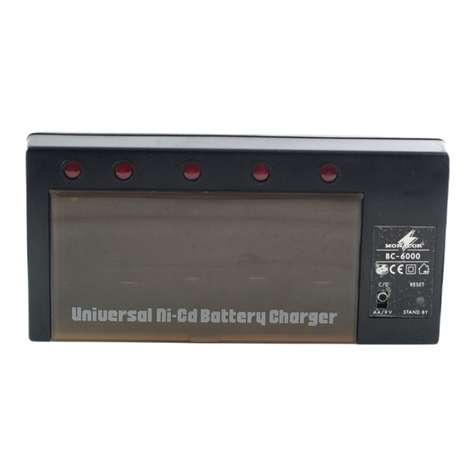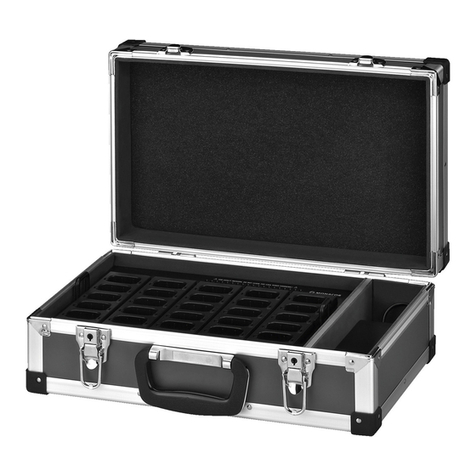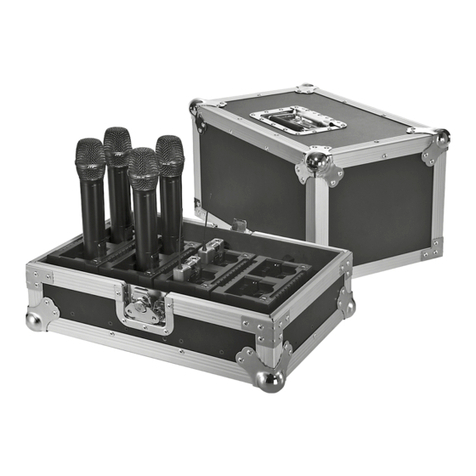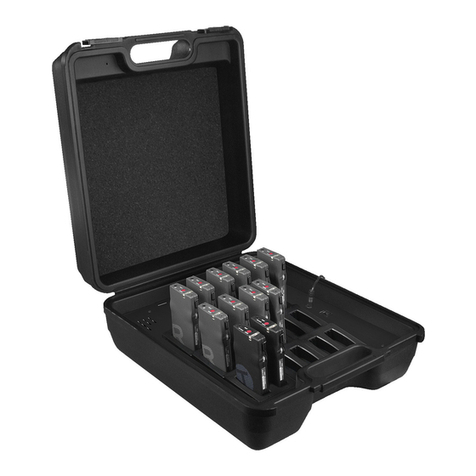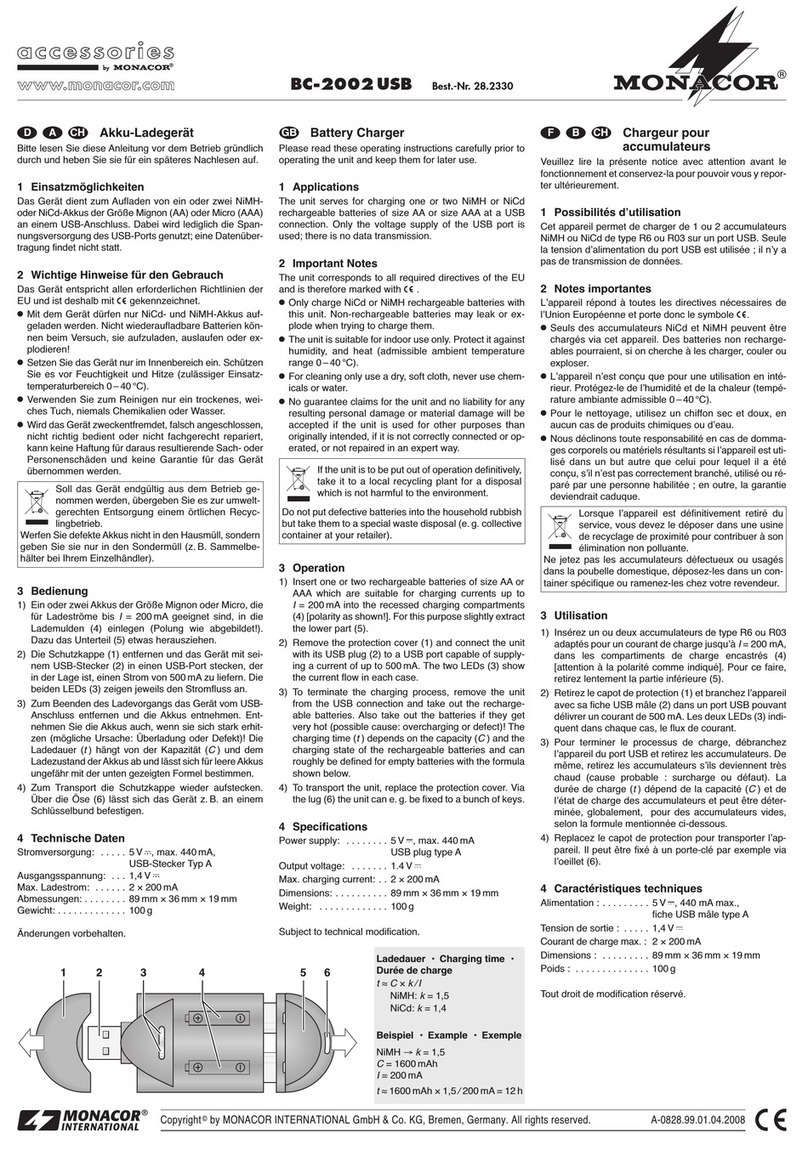
Chargeur rapi e pour
accumulateurs
Veuillez lire la présente notice avec attention avant le
fonctionnement et conservez-la pour pouvoir vous y
reporter ultérieurement.
1 Possibilités ʼutilisation
Cet appareil permet de charger de 1 ou 2 accumula-
teurs NiMH ou NiCd de type 9 V. Un microprocesseur
gère le processus de charge séparément pour chaque
accumulateur (surveillance Delta-V) et commute sépa-
rément sur une charge de maintien dès quʼun accu-
mulateur est chargé. Les accumulateurs peuvent, en
option, être déchargés avant le processus de charge.
Cʼest intéressant, de temps en temps, surtout pour des
accumulateurs de type NiCD, pour empêcher toute
perte de capacité causée par lʼeffet “Mémoire”.
2 Notes importantes
Lʼappareil répond à toutes les directives nécessaires
de lʼUnion Européenne et porte donc le symbole .
GSeuls des accumulateurs NiCd et NiMH peuvent être
chargés via cet appareil. Des batteries non rechar-
geables pourraient, si on cherche à les charger, cou-
ler ou exploser.
GLʼappareil nʼest conçu que pour une utilisation en in-
térieur. Protégez-le des éclaboussures, de tout type
de projections dʼeau, dʼune humidité élevée de lʼair
AVERTISSEMENT Lʼappareil est alimenté par une
tension dangereuse (230 V~).
Ne touchez jamais lʼintérieur de
lʼappareil car, en cas de mau-
vaise manipulation, vous pouvez
subir une décharge électrique.
et de la chaleur (température ambiante admissible
0– 40 °C).
GNe faites pas fonctionner lʼappareil et débranchez-
le immédiatement de lʼalimentation dans les cas sui-
vants :
1. lʼappareil présente des dommages visibles.
2. après une chute ou accident similaire, vous avez
un doute sur lʼétat de lʼappareil.
3. des dysfonctionnements apparaissent.
Dans tous les cas, les dommages doivent être répa-
rés par un technicien spécialisé.
GPour le nettoyage, utilisez un chiffon sec et doux, en
aucun cas de produits chimiques ou dʼeau.
GNous déclinons toute responsabilité en cas de dom-
mages corporels ou matériels résultants si lʼappareil
est utilisé dans un but autre que celui pour lequel il
a été conçu, sʼil nʼest pas correctement utilisé ou ré-
paré par une personne habilitée ; en outre, la ga-
rantie deviendrait caduque.
3 Utilisation
1) Placez un ou deux accumulateurs 9 V acceptant la
charge rapide sur les contacts des deux
connexions (4) [attention à la polarité].
2) Reliez lʼappareil à une prise secteur 230 V~/50 Hz.
Les LEDs CHARGE/READY (3) brillent indépen-
damment lʼune de lʼautre :
Lorsque lʼappareil est définitivement retiré du
service, vous devez le déposer dans une
usine de recyclage de proximité pour contri-
buer à son élimination non polluante.
Ne jetez pas les accumulateurs défectueux ou usa-
gés dans la poubelle domestique, déposez-les dans
un container spécifique ou ramenez-les chez votre
revendeur.
BC-29 DV Best.-Nr. 28.2340
Copyr ght©by MONACOR INTERNATIONAL GmbH & Co. KG, Bremen, Germany. All r ghts reserved. A-0831.99.01.04.2008
F B CH– en rouge lorsque lʼaccumulateur est en charge
–en vert lorsque lʼaccumulateur est chargé : puis
elle indique le plus faible courant de charge de
maintien.
3) Si les accumulateurs doivent être déchargés,
appuyez sur la touche DISCHARGE (1). Pendant
la décharge, la LED DISCHARGE (2) brille.
Lorsquʼun accumulateur est déchargé, le proces-
sus de charge démarre automatiquement.
4) Une fois la charge terminée, débranchez lʼappareil
de la prise secteur et retirez les accumulateurs.
4 Caractéristiques techniques
Alimentation : . . . . . . . 230 V~/50 Hz, 5 VA
Tension de sortie : . . . . 9,8 V
Courant de charge
max. : . . . . . . . . . . . . . 2 × 70 mA
Courant de charge
de maintien : . . . . . . . . 2 ×7mA
Dimensions : . . . . . . . . 64 mm × 92 mm × 98 mm
Poids : . . . . . . . . . . . . . 220 g
Tout droit de modification réservé.
DISCHARGE (2) si accende. Se una batteria è
stata scaricata, si avvia automaticamente la carica.
4) Dopo la carica staccare lʼapparecchio dalla presa e
togliere le batterie.
4 Dati tecnici
Alimentazione: . . . . . . 230 V~/50 Hz, 5 VA
Tensione dʼuscita: . . . . 9,8 V
Corrente max.
di carica: . . . . . . . . . . . 2 × 70 mA
Corrente di
mantenimento: . . . . . . 2 ×7mA
Dimensioni: . . . . . . . . . 64 mm × 92 mm × 98 mm
Peso:..............220g
Con riserva di modifiche tecniche.
Caricabatterie rapi o
Vi preghiamo di leggere attentamente le presenti istru-
zioni prima della messa in funzione e di conservarle
per un uso futuro.
1 Possibilità ʼimpiego
Questo caricatore serve per caricare una o due batterie
transistor 9 V del tipo NiMH o NiCd. Un microproces-
sore gestisce la carica separatamente per ogni batte-
ria (controllo Delta-V) e attiva la tensione di manteni-
mento non appena una batteria è carica. Come
opzione, le batterie possono essere scaricate prima
della carica. Questo fatto è delle volte utile, special-
mente per i tipi al NiCd, per escludere una perdita di
capacità per via dellʼeffetto memory.
2 Avvertenze importanti per lʼuso
Questʼapparecchio è conforme a tutte le direttive
richieste dellʼUE e pertanto porta la sigla .
GCon lʼapparecchio si devono ricaricare solo batterie
al NiCd e al NiMH. Le batterie non ricaricabili pos-
sono perdere oppure esplodere se si cerca di ricari-
carle!
GUsare lʼapparecchio solo allʼinterno di locali. Proteg-
gerlo dallʼacqua gocciolante e dagli spruzzi dʼacqua,
da alta umidità dellʼaria e dal calore (temperatura
dʼimpiego ammessa fra 0 e 40 °C).
GNon mettere in funzione lʼapparecchio e staccarlo
subito dalla presa se:
AVVERTIMENTO Lʼapparecchio funziona con peri-
colosa tensione di rete (230 V~).
Non intervenire mai personal-
mente al suo interno! Esiste il
pericolo di una scarica elettrica.
1. lʼapparecchio presenta dei danni visibili;
2. dopo una caduta o dopo eventi simili sussiste il
sospetto di un difetto;
3. lʼapparecchio non funziona correttamente.
Per la riparazione rivolgersi sempre ad unʼofficina
competente.
GPer la pulizia usare solo un panno morbido, asciutto;
non impiegare in nessun caso prodotti chimici o
acqua.
GNel caso dʼuso improprio, dʼimpiego scorretto o di ri-
parazione non a regola dʼarte dellʼapparecchio, non
si assume nessuna responsabilità per eventuali
danni consequenziali a persone o a cose e non si
assume nessuna garanzia per lʼapparecchio.
3 Funzionamento
1) Inserire sui contatti delle due sedi (4) una o due
batterie 9V che supportino la carica rapida (rispet-
tare la polarità!).
2) Inserire lʼapparecchio in una presa di rete
(230 V~/50 Hz). I LED CHARGE/READY (3) si
accendono indipendentemente
– di color rosso durante la carica della batteria
– di color verde quando la batteria è carica;
scorre in questo caso solo la modesta corrente
di mantenimento
3) Per scaricare le batterie, premere il pulsante
DISCHARGE (1). Durante la scarica, il LED
Se si desidera eliminare lʼapparecchio defini-
tivamente, consegnarlo per lo smaltimento
ad unʼistituzione locale per il riciclaggio.
Non gettare le batterie scariche o difettose nelle
immondizie di casa bensì negli appositi contenitori
(p. es. presso il vostro rivenditore).
I
®
®
1
2
3
4

